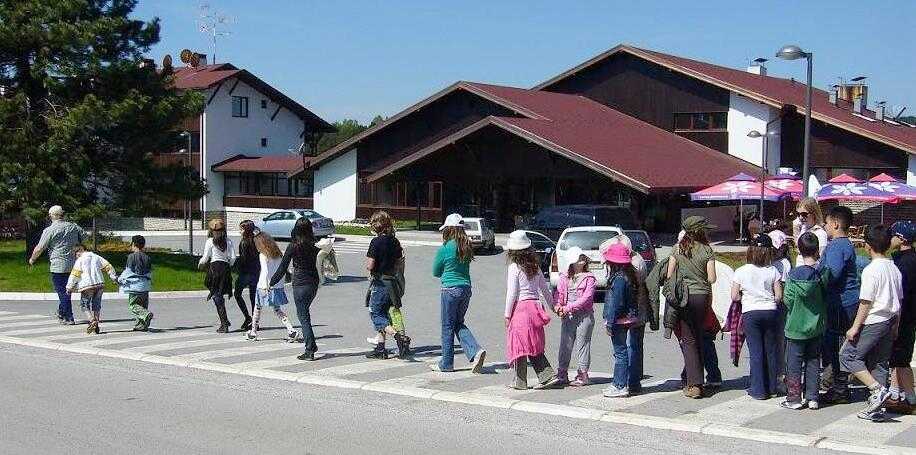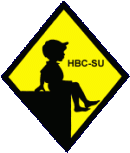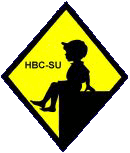
Figure 1.-- A teacher sends us a photograph of him and his walking bus. He tells us, "Some one took this of me and the kids in Serbia. I think it is hilarious." |

|
Serbian children like most European children generally walked to school. This actually was the case all over the world. It was true in part because of living patterns. European children even in rural areas. tended to live in villages. Thus they went to village schools. This was possible because farms tended to be much smaller than American farms. Or they lived on estates owned by large land owners. American farms were much larger. And because Americans lived on their farms, it was often a long way to the town schools. America solved the school problem by large numbers of very small one-or-two room schools. This put the schools within walking distance of the children. Thanks to Henry Ford, this began to change because operating small schools was expensive. By the 1930s, American states began consolidating small schools and bussing the rural children. Serbians at the time did not have private cars and there were very few school busses. This did not begin to change in Europe until after World War II and the European Economic Miracles began to take hold. And gradually European Children began to move toward American patterns with children coming to school in busses and cars. Serbian children (at the time Yugoslavian children) made this transition slower than children in Western Europe because of the Communist economy (albeit Communist-light). Serbia until the 1990s was a Yugoslav province. Serbian children mostly walk to school. A teacher sends us a photograph of him and his walking bus. We have seen that in other countries such as Britain and New Zealand. Rural schools were in villages where the children could also walk. We are less sure about secondary schools. Most children in rural areas did not go to secondary schools. Some children lived with relatives or board in the cities so they could attend secondary schools. Most children in the city probably walked to school. Some may have had bikes or taken public transport. We are not sure about current trends. Serbia is less prosperous than Western Europe, so many families do not have cars. Thus fewer parents drive the children to school than is common in Western Europe. We are not sure how common school buses are. A reader writes, "In Serbia most children travel to school on the bus, tram or car. Small groups of children walk together. Some children go with their parents. My private school organized bus transport otherwise parents came in their cars to collect their children. Most lived a long way from the school. Some children went home on the bus. They were usually escorted by mum. The parents of these children often worked at the school. It is quite joyful travailing on the bus. As children got on board they spotted their friends and gave a friendly wave, a nod, hand shake and then sat together in conversation. Some times children were late and made frantic dashes to catch the bus before it pulled away. The drivers were often friendly and waited for the late comers."
Serbian children like most European children generally walked to school. This actually was the case all over the world. It was true in part because of living patterns. European children even in rural areas. tended to live in villages. Thus they went to village schools. This was possible because farms tended to be much smaller than American farms. Or they lived on estates owned by large land owners. American farms were much larger. And because Americans lived on their farms, it was often a long way to the town schools. America solved the school problem by large numbers of very small one-or-two room schools. This put the schools within walking distance of the children. Thanks to Henry Ford, this began to change because operating small schools was expensive. By the 1930s, American states began consolidating small schools and bussing the rural children. Serbians at the time did not have private cars and there were very few school busses. Rural schools were in villages where the children could also walk. We are less sure about secondary schools. Most children in rural areas did not go to secondary schools. Some children lived with relatives or board in the cities so they could attend secondary schools. Most children in the city probably walked to school. Some may have had bikes or taken public transport. We are not sure about current trends.
This did not begin to change in Europe until after World War II and the European Economic Miracles began to take hold. And gradually European Children began to move toward American patterns with children coming to school in busses and cars. Serbian children (at the time Communist Yugoslavia) children made this transition slower than children in Western Europe because of the Communist economy (albeit Communist-light). Yugoslavia avoiided Soviet impopsed Stalinism. And Communist reforms that so damaged Eastern-European economies were limited in Yugoslabia. Serbia until the 1990s was a Yugoslav province. Serbian children mostly walked to school. Thus dud not change in the Communist era. Serbia was less prosperous than Western Europe, so very few families had cars. Thus fewer parents drive the children to school than is common in Western Europe. We are not sure how common school buses are. And most children did not have bikes.
As Communist disappeared, Yigoslavia was engulfed in a bloody Civil War 1991-2001). Only gradually did Serbia begin gto make real economic progress. A reader writes in 2010, "In Serbia most children travel to school on the bus, tram or car. Small groups of children walk together. Some children go with their parents. My private school organized bus transport otherwise parents came in their cars to collect their children. Most lived a long way from the school. Some children went home on the bus. They were usually escorted by mum. The parents of these children often worked at the school. It is quite joyful travailing on the bus. As children got on board they spotted their friends and gave a friendly wave, a nod, hand shake and then sat together in conversation. Some times children were late and made frantic dashes to catch the bus before it pulled away. The drivers were often friendly and waited for the late comers."
A teacher sends us a photograph of him and his walking bus. We have seen that in other countries such as Britain and New Zealand.
Related Chronolgy Pages in the Boys' Historical Web Site
[The 1880s]
[The 1930s]
[The 1940s]
[The 1930s]
[The 1940s]
[The 1950s]
[The 1960s]
[The 1970s]
[The 1980s]
Related Style Pages in the Boys' Historical Web Site
[Long pants suits]
[Short pants suits]
[Socks]
[Eton suits]
[Jacket and trousers]
[Blazer]
[School sandals]
Navigate the Boys' Historical Clothing Web Page
[Return to Main Serbian school activities page]
[Return to Main Serbian school page]
[Return to Main Serbian page]
[Return to Main Serbian history page]
[Introduction]
[Activities]
[Biographies]
[Chronology]
[Clothing styles]
[Countries]
[Bibliographies]
[Contributions]
[FAQs]
[Glossaries]
[Images]
[Links]
[Registration]
[Tools]
[Boys' Clothing Home]
